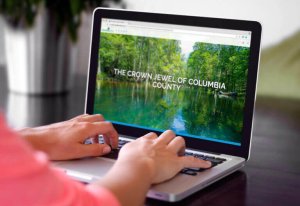Spark Love Between Your Paid and Earned Media Strategies
July 12, 2023
“If a young man tells his date how handsome, smart and successful he is – that’s advertising. If the young man tells his date she’s intelligent, looks lovely and is a great conversationalist, he’s saying the right things to the right person and that’s marketing. If someone else tells the young woman how handsome, smart and successful her date is – that’s PR.”
– S.H. Simmons
Now imagine if you were on a first date and all three of those things occurred. A second date seems much more likely based on the layering effect of delivering similar messages in different channels, or at least more likely than if only one had occurred (especially that ego advertising bit). Metaphor aside, blending paid and earned media strategies is a potent mix to help maximize the impact of your destination marketing efforts. Many know this, yet aren’t taking the correct steps to ensure our paid and earned efforts are walking hand-in-hand on a continual basis. It’s easier than you think — here are a few simple steps you can take to get on track:
Step One: Get the Right Players in The Room
Whether you’re building your marketing and public relations strategies internally or are working with agencies to achieve your organization’s goals, it’s vital to get those responsible together consistently and from the onset of strategy ideation. Your marketing and PR departments need to be collaborating on their annual plans, not just specific components or campaigns. Do this during your annual budgeting and planning cycle in order to align the next 12 months of strategy. If you have a marketing agency and a PR agency, it’s your responsibility to ensure there is an open, collaborative relationship with the two and bring them together with a regular cadence to compare overall efforts and to determine if they’re meeting the same end – yours. An agency working with you on both sides of the fence should already be presenting all plans to you under this framework.
Step Two: Set Clear Goals
conversions? Once you have identified your goals, approach them from both marketing and PR sides — how can you leverage each to enhance and complement the other? Challenge your team and your agencies to ideate collaboratively and try new things.
Example: Visit Tampa Bay consumer event in New York City with paid media and influencers.
Step Three: Understand Your Target Audience Deeply
As destination marketers, this one is kind of a given. But are you taking it as far as you can to maximize impact? Developing a deep understanding of your target audience goes beyond their geographic and demographic profiles. It’s important to understand their interests, their media consumption habits and their defining beliefs, then layer in current media and cultural trends along with some out-of-the-box thinking. If you want to cut through the clutter and reach them, you need to do it iteratively and consistently. Neither paid nor earned approaches can do that effectively in silos.
Step Four: Integrate, Optimize, Repeat
Consistency is the key when aligning your marketing and public relations strategies (see Step One) and both sides need to be working from the same playbook to ensure continuity in messaging, branding and content positioning across paid and earned. You can’t reinforce a brand idea if the messages potential visitors receive vary by platform. Further, this isn’t a set it and forget it game plan. You need to regularly regroup your players for data analysis across paid and earned to identify trends, patterns and key insights to inform agile shifts in strategy. Don’t wait until the end of the fiscal year or end of the campaign to compare notes. Finally, don’t be afraid to push the envelope and experiment. Test different channels, different seasons, different formats, and content types to find the messaging tactic that best fits your brand and your desired outcomes.
A successful blend of paid and earned media strategies requires early collaboration and combination of strategy for long lead success. It requires open dialogue and cross-team functionality. It requires ongoing monitoring, adaptation, and optimization. Be open to learning from your campaigns and adjusting strategies based on the results. Set expectations and create a forum for your marketing and public relations teams or your agencies to work in collaboration.
We all want that second date. Getting everyone aligned and on the same page means you’ve got a much stronger chance to end up on the same side of the table with two straws in one drink.



